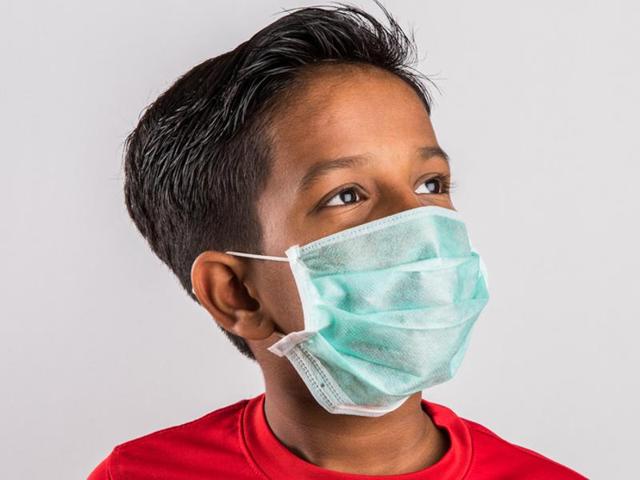Toxic air hurts our kids the most, can even cause attention deficit
Children have high respiration rates and inhale far more air in proportion to their body weight than adults do. While healthy adults at rest breathe in 12 to 16 times in a minute, babies less than a year old inhale 24 to 30 times a minute, toddlers under 5 years 20 to 30 times, while children ages 6 to 12 years do it 12 to 20 times a minute.
Lately, air pollution has been popping up in conversations with the inevitability of a hangover after spirited celebrations. It’s the only thing people in Delhi are talking about. If they’re not griping about the paralysis of successive state governments to craft a comprehensive clean air policy, they are fretting over the inconvenience of using the state’s disjointed public transport or apologising for the city’s roads being choked with aggressive road warriors out to seek and destroy. And destroy they do, in ways more insidious than road traffic accidents. Vehicular emissions hurt more people off the roads than on it, with children being the hardest hit.

Children have high respiration rates and inhale far more air in proportion to their body weight than adults do. While healthy adults at rest breathe in 12 to 16 times in a minute, babies less than a year old inhale 24 to 30 times a minute, toddlers under 5 years 20 to 30 times, while children ages 6 to 12 years do it 12 to 20 times a minute. Since children are usually active and spend far more time outdoors —be it at school or at play at home — than adults, their respiratory rates get pushed up further, which leads to their inhaling more pollutants per kg of body weight compared to an adult.
Lung Damage
Add to this the fact that their airways are narrower and their lungs still developing — 80% of the air sacs (alveoli) where oxygen gets transferred to the blood develop after birth — and you have a cocktail of risk factors that can obstruct breathing on exposure to air toxins, such as suspended particulate matter or ground-level ozone, which is hazardous at all levels.

Growing up in polluted areas led to irreversible lung damage, showed data from a US study that tracked children between ages 10 and 18 over eight years. The study, reported in The New England Journal of Medicine found pollution led to lung function dropping by an average of 20% below normal, which was similar to the effect of growing up in a home where parents smoked indoors.
Read: Air pollution kills 30,000 in Delhi every year
Even short-term ozone exposure lowers lung function, causes breathing problems and lung inflammation in both children and adults, reported the Journal of Respiratory and Critical Care Medicine, which also found ozone exposure raised death rates among people with heart disease, congestive failure, chronic obstructive pulmonary disease and diabetes.
Cellular Damage and Cancer
Along with ozone, sulfur dioxide, sulphate aerosols and suspended particles cause cellular damage to the airways and lungs and impair their function permanently. Sulfuric acid compounds and other acidic aerosols paralyse the mucociliary clearance system in the lungs by drying mucous, paralysing cilia and bronchi, which together are in the frontline of the lung’s defense system against particles and bacteria. Sulphur dioxide also constricts the airways, causing wheezing and asthma attacks, lowers lung cell permeability, and form scar tissue in the lungs.

The International Agency for Research on Cancer has classified outdoor air pollution as a carcinogenic (Group 1) after it was found to cause lung cancer and contribute to bladder cancer. Particulate matter was evaluated separately and also classified as carcinogenic to humans.
Asthma and Allergies
Ozone, sulfur dioxide and particulate matter trigger attacks and lead to higher medication use and increased hospitalisation, with children living next to busy streets have 1.2 to 1.7-fold higher chances of developing asthma, found a eight-city study across India. The study, done cross 18 centres in eight cities and published in the Journal of Asthma, compared asthma prevalence to traffic density near the homes of the children aged 6 to 7 years and 13 to 14 years. The prevalence of asthma in children in Delhi was 6.02%, which was higher than the national average of 5.35%.
Attention Deficit
The damage begins in the womb, with pollutants leading to brain changes and developmental delays that result in slower processing speed, attention deficit and behavioural problems after birth, reported researchers in JAMA Psychiatry. Past research in the journal also linked a mother’s mental stress and exposure to air pollution during pregnancy with changes in the baby’s behavioural development, with the child more likely to be depressed, withdrawn, aggressive and disruptive. Children exposed to pollution in the womb have low birthweight, length, and head circumference, which leads to their being stunted in later life.
More hospitalisations
Pollution not only leads to coughing, and upper respiratory infections in children but also causes more severe diseases. Several studies have linked a rise in ozone, sulfates, aerosol hydrogen ion levels, and particulates with increased hospital admissions. Peak particulate pollution levels — from diesel and factory emissions, construction dust, agricultural fires etc — tripled the number of children hospitalised with respiratory illness, compared to a 44% increase in adult hospitalisations, reported a study in American Journal of Public Health.
Catch your daily dose of Fashion, Health, Festivals, Travel, Relationship, Recipe and all the other Latest Lifestyle News on Hindustan Times Website and APPs.




